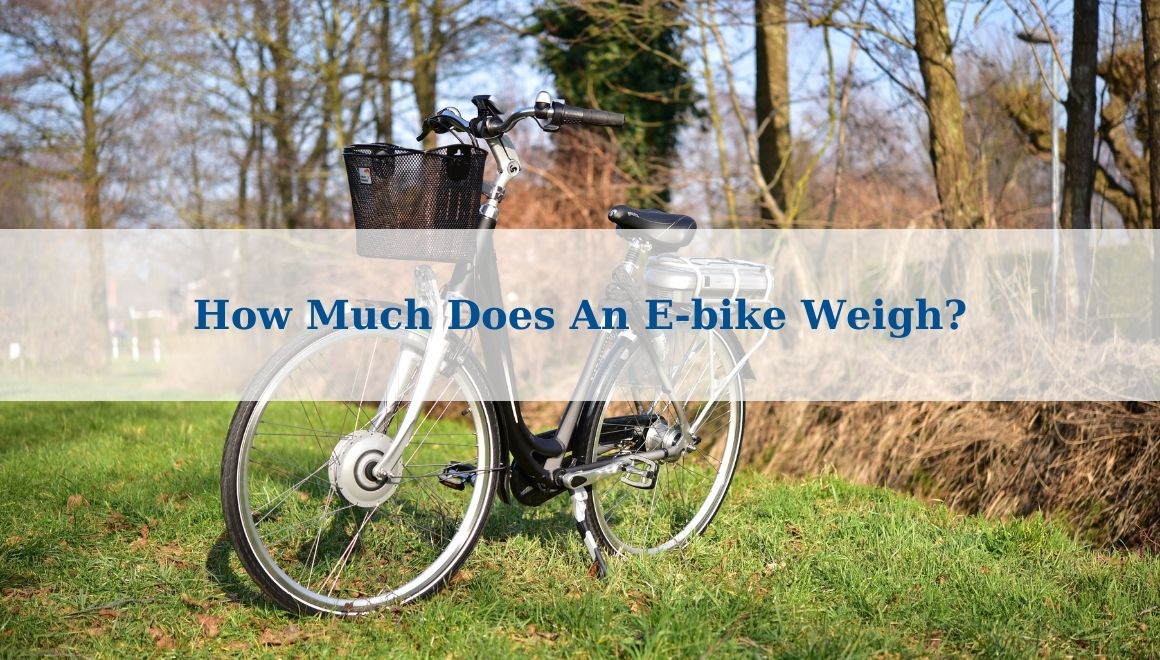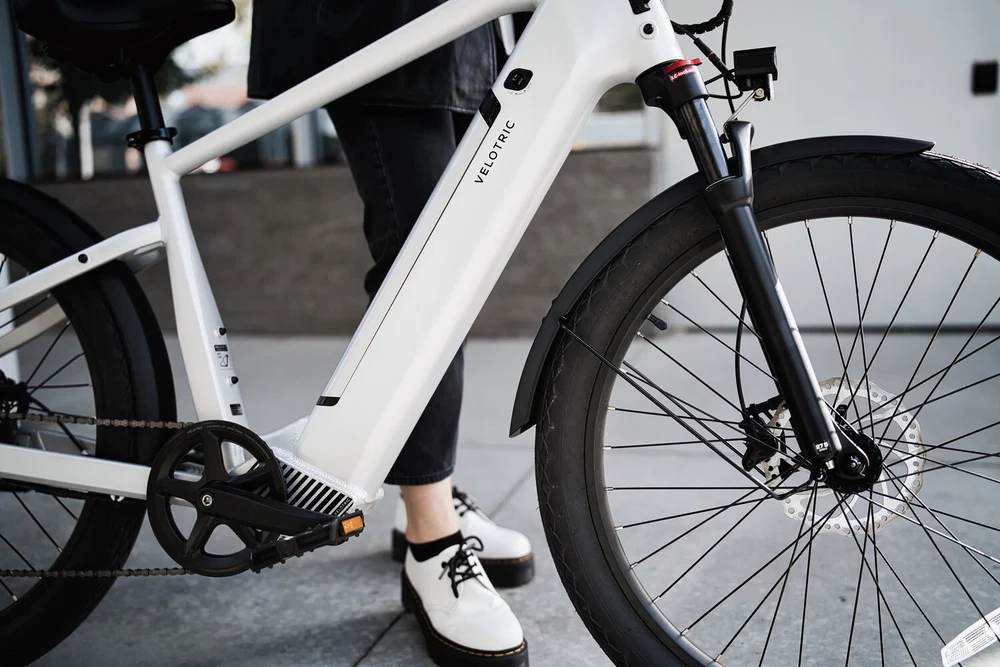Electric bikes, or ebikes, are swiftly carving out their niche in the world of transportation and recreation. Their unique appeal lies in blending the traditional bicycle experience – exercise and the joy of fresh air – with the modern twist of electric motor assistance. This combination opens the door for people of varying fitness levels and abilities to enjoy biking in a new way.
A key question often arises about ebikes: How much do they weigh? Unlike traditional bikes, ebikes come with additional components like motors and batteries, contributing to a greater overall weight. This aspect can influence their portability and ease of use. In this comprehensive guide, we delve into the typical weight range of an ebike, explore the factors influencing this weight, and provide insights on choosing the right ebike based on weight considerations.
Understanding Ebike Weight: The Basics
Typically, an ebike’s weight falls between 40 and 75 pounds (18 and 34 kilograms). However, this is not a one-size-fits-all scenario. Various factors can cause significant variations in weight, including:
- Type of Ebike: Different ebike categories, such as e-mountain bikes and e-cargo bikes, tend to be heavier due to their robust frames and specialized components.
- Motor Size: The motor is a super important component of an ebike. Larger motors add to the overall weight.
- Battery Size: Similarly, larger batteries, super important for longer range, also contribute to a heavier ebike.
- Frame Material: The choice of material for the frame plays a significant role. Aluminum frames generally make for lighter ebikes compared to those with steel frames.
- Component Quality: A trade-off often occurs between weight and cost. Higher quality components tend to be lighter but also more expensive.
Understanding these factors is super important when considering an ebike’s weight. They not only impact the bike’s performance but also affect its handling and ease of transportation.
Factors That Affect Ebike Weight
The weight of an ebike is not solely determined by its physical components. Several other factors play a really key role:
- Motor Type: Ebikes typically come with either hub motors or mid-drive motors. Hub motors are generally lighter, while mid-drive motors, though heavier, offer better efficiency and balance.
- Battery Type: The battery is another major contributor to weight. Ebikes use different types of batteries: lead-acid, lithium-ion, and nickel-metal hydride (NiMH). Lead-acid batteries are the heaviest, whereas lithium-ion batteries are much lighter.
- Frame Material: The choice of frame material can significantly affect the weight. Aluminum frames are lighter than steel, but some high-end ebikes also use carbon fiber for an even lighter frame.
- Component Quality: As mentioned earlier, the quality of components has a direct correlation with weight. Higher quality usually equals lighter weight but comes at a higher cost.
When evaluating an ebike’s weight, it’s super important to consider these factors collectively. They not only influence the bike’s weight but also its performance, durability, and cost.
Choosing the Right Ebike Based on Weight
Selecting the right ebike involves more than just considering its power and style; weight plays a super important role, especially if portability and ease of handling are priorities. Here’s how to make an informed decision based on weight:
- Opt for a Lightweight Frame: Aluminum frames are your best bet if weight is a concern. They provide a good balance between durability and lightness.
- Consider the Motor Type: Hub motors, typically lighter than mid-drive motors, might be a more suitable choice for those looking for a lighter ebike.
- Battery Weight: Choose an ebike with a lithium-ion battery. These batteries offer a great combination of lightness and performance.
- Simplify Your Components: Look for ebikes that don’t have unnecessary add-ons like heavy fenders or baskets, unless you specifically need them.
Remember, the lighter the ebike, the easier it will be to carry up stairs, load into a car, or maneuver in tight spaces. However, don’t compromise on super important features and performance for the sake of weight alone.
Benefits of Choosing a Lighter Ebike
1. Enhanced Maneuverability and Portability
One of the most significant advantages of a lighter ebike is its ease of maneuverability. With less weight to control, riders find it simpler to navigate through traffic, around obstacles, and across varied terrains. This lightness also extends to transportation needs. Whether it’s carrying the bike up a flight of stairs, loading it onto a bike rack, or simply moving it in and out of storage, the reduced weight makes these tasks less strenuous.
2. Reduced Effort in Pedaling
A lighter ebike requires less energy to pedal, particularly when the motor is off or on lower assistance modes. This can make for a more comfortable and enjoyable ride, especially for longer distances or for riders who prefer a more leisurely experience. The reduced effort can also be a boon for those who use their ebike for commuting, allowing them to arrive at their destination without being excessively tired or sweaty.
3. Better Hill Climbing Ability
Climbing hills can be challenging, especially on heavier bikes. A lighter ebike, however, can tackle inclines more efficiently. The reduced weight means less power is required from both the rider and the motor to overcome gravity, making steep ascents more manageable and less taxing.
4. Extended Range on a Single Charge
A lighter ebike often translates to better energy efficiency. With less mass to move, the motor consumes less battery power, thereby extending the range of the bike on a single charge. This is particularly beneficial for long-distance riders or those who use their ebike regularly and want to minimize frequent charging.
Drawbacks of Choosing a Lighter Ebike
1. Potential Compromise on Durability
In pursuit of lightness, some ebikes may compromise on material strength, leading to questions about durability. Heavier ebikes often use robust materials and construction, which can withstand more wear and tear. Lighter ebikes might require more careful handling and potentially more frequent maintenance, especially if used extensively or in challenging conditions.
2. Shorter Range in Some Cases
While lighter ebikes can offer better range in general, this isn’t always the case. Sometimes, to reduce weight, manufacturers may opt for smaller batteries, which could limit the bike’s range. This means that some lighter ebikes might not be suitable for longer trips without recharging.
3. Higher Price Point
Lightweight materials and advanced technology often come at a higher cost. Manufacturing lighter frames, especially those using carbon fiber or high-grade aluminum, along with lightweight but powerful batteries and motors, can drive up the price of an ebike. Therefore, a lighter ebike may represent a more significant investment compared to its heavier counterparts.
Conclusion
In summary, the weight of an ebike is a vital aspect to consider, impacting everything from handling to transportability. While the average ebike weighs between 40 and 75 pounds, this can vary based on the type of ebike, motor and battery size, frame material, and component quality. When choosing an ebike, balance your weight preferences with your needs for performance, range, and features. Lighter ebikes offer ease of transport and handling, but ensure they also meet your riding requirements.
For a more in-depth look into ebikes and to find the perfect one for you, visit our homepage at Refried Cycles. Here, you’ll find a range of options and expert advice to guide you in choosing the ebike that best fits your lifestyle and needs.









